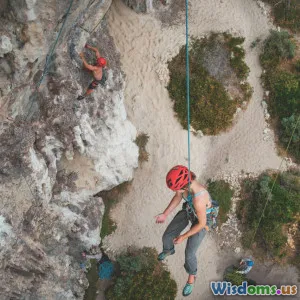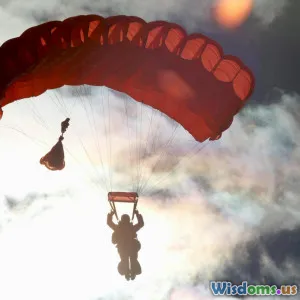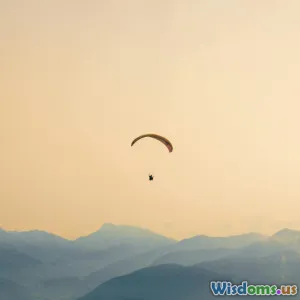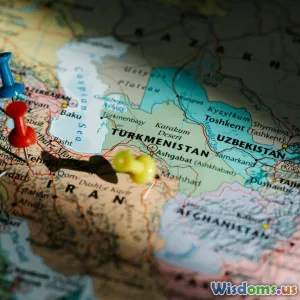
The Real Cost of Extreme Sports Travel Packages Explained
11 min read Unveiling the true costs behind extreme sports travel packages and what you should consider before booking your next adventure. (0 Reviews)
The Real Cost of Extreme Sports Travel Packages Explained
Embarking on an adventure through extreme sports travel packages is a dream for thrill-seekers worldwide. Whether it’s surfing monstrous waves in Hawaii, trekking the icy heights of Patagonia, or base jumping off cliffs in Norway, these packages offer an all-in-one gateway to exhilarating experiences. But beneath the excitement and glossy brochures lies a reality that many travelers overlook — the real cost of extreme sports travel packages.
In this detailed article, we dissect those hidden expenses and help you understand what you are truly paying for, ensuring you’re financially prepared to take the plunge.
What Defines an Extreme Sports Travel Package?
Extreme sports travel packages typically bundle accommodation, guided experiences, gear rentals, permits, and sometimes training sessions into one deal. Advertisers market these packages as convenient, safer routes to adrenaline-filled adventures — perfect for both novices and seasoned adrenaline junkies.
Popular extreme sports included in such packages encompass:
- Surfing in renowned big-wave spots like Nazaré, Portugal
- Skydiving over scenic landscapes such as the Swiss Alps
- Whitewater rafting in powerful rivers like Colorado’s Arkansas River
- Mountain biking challenging some of the most rugged terrains
- Climbing and mountaineering in iconic locations such as Mount Kilimanjaro or Yosemite
However, beneath this simplicity is a complex web of cost factors that influence the final price tag.
The Base Price: What’s Included—and What’s Not
The first eye-opener for travelers is to delve beyond the headline price. Advertised package prices may seem reasonable at first glance but can be deceptively minimalistic. They often cover:
- Basic accommodation (sometimes dorm-style or budget hotels)
- Standard meals
- Guided activity sessions
- Essential permits or park fees
- Routine gear rental
What is commonly excluded and leads to unexpected expenses:
- International and domestic flights
- Premium or personal gear
- Specialized insurance required for extreme sports
- Additional training or certification courses
- Emergency/rescue coverage
- Transportation to and from activity sites
- Alcohol, souvenirs, and tips
For illustration, a 7-day surfing package in Bali advertised at $1500 might exclude flights from your home country (~$800–1200), plus optional advanced surfing lessons ($300), and insurance coverage ($150). When these are factored in, the actual cost can escalate by 50–70%.
Equipment and Gear: Renting vs. Owning
The cost of equipment can be a substantial and sometimes hidden factor. Many extreme sports rely on specialized gear:
- Surfboards that can cost upwards of $800 for a decent model
- Parachutes ranging between $2,500 and $5,000
- High-end mountain bikes costing $2,000 to $10,000
- Climbing harnesses, ropes, helmets, and boots
Travel packages often include basic rental gear, but advanced users may require custom or premium equipment, which is either rented at an extra charge or must be flown in personally. Additionally, travelers who own gear face pressure to safeguard it during transit or pay high baggage fees.
As Forbes reported in 2022, travelers frequently underestimate luggage fees, especially when transporting bulky extreme sports gear internationally, which can add $200–$500 depending on airlines.
Training and Certification Costs
Many extreme sports require a baseline of knowledge or certification — skydiving licenses, rafting safety courses, scuba certification, or climbing experience.
Packages aimed at beginners might include introductory courses, but advanced training is often extra. For instance, a mountaineering package might assume you have basic climbing know-how, yet fail to include necessary technical skill lessons, sometimes costing several hundred dollars separately.
The Wilderness Education Association (WEA) estimates that proper pre-trip training can add between $500 and $2,000 depending on the sport’s complexity and location.
Insurance and Risk Management
Extreme sports are inherently risky, and insurance policies for accidents, rescue, and evacuation are often mandatory but expensive.
Standard travel insurance rarely covers high-risk activities. Specialized insurance for skydiving, scuba diving, or mountaineering may cost an extra 15–30% on top of your base plan.
According to a 2021 report by World Nomads, medical evacuation from remote extreme sport locations can run from $10,000 to $30,000, underscoring the necessity of adequate insurance.
The investment in insurance often acts as a life- and budget-saver, yet it is an underappreciated travel package expense.
Logistics: Travel, Transfers, and Convenience
Many extreme sports destinations are remote or inaccessible via direct transport. Airport transfers, shuttle services, equipment transport, and local accommodations not included in the package can hike up your expenses.
For example, reaching Sri Lanka’s top surfing spots might require multiple bus or taxi rides that, combined, cost over $100. Likewise, climbing expeditions often require porters or guides to transport gear, increasing package prices if not included.
Packages often promise 'all-inclusive' travel convenience, yet may require travelers to manage complex logistics themselves or pay for private transfers.
The Hidden Costs of Group Dynamics and Optional Extras
Traveling in groups through packages comes with both benefits and costs. Group discounts may be available, but extras like group meals, equipment upgrades, or celebratory activities can add expenses.
Packages frequently offer optional upgrades – upgraded accommodations, premium meals, extended tours, or photo-documenting services, each easily adding $200–$1000 depending on the level.
An Extreme Sports Travel Trends Study (2023) noted 40% of travelers booked optional extras, boosting total spend well beyond initial budgets.
Real-World Examples—A Comparison
To contextualize the above, let's compare two popular extreme sports travel packages:
1. 10-Day Patagonian Ice Climbing Adventure
- Package price: $3,500 (includes basic lodging, guided climbs, some gear rental)
- Exclusions:
- Flights: $1,200
- Personal gear purchase (boots, layers): $700
- Training course prior to trip: $800
- Insurance: $400
- Transfers: $150
- Total estimated actual cost: $6,750
2. 7-Day Hawaii Big Wave Surfing Camp
- Package price: $2,000 (meals, basic board rental, daily coaching)
- Exclusions:
- Flights from U.S. mainland: $500
- Surfing certification lessons: $400
- Premium rent of high-performance surfboards: $300
- Travel insurance covering water sports: $250
- Optional spa/shuttle services: $150
- Total estimated actual cost: $3,600
These examples highlight that the headline price represents roughly 50% - 60% of what travelers may actually invest when factoring in all elements.
How to Navigate and Plan for True Costs
- Research extensively: Request detailed breakdowns from providers and read reviews to understand true inclusions
- Budget for extras: Include flights, gear, training, insurance, and contingencies upfront
- Invest in proper insurance: Accept that it’s a critical safety net
- Consider gear ownership vs. rental: Factor in baggage and damage fees
- Expect logistics complexity: Anticipate additional transport or accommodation needs beyond the package
Conclusion: Beyond the Price Tag Lies the Experience
Extreme sports travel packages are an exciting gateway to unique, adrenaline-fueled adventures but come with multifaceted costs often concealed behind attractive promotional rates. Being fully aware of the real financial commitments — gear, training, insurance, logistics, and optional extras — equips you to avoid surprises and unsafe compromises.
With thorough preparation and research, you can find packages that suit your skill level and budget, experience thrills safely, and make memories that justify their investment. The price you pay is not just for the trip but for peace of mind in daring pursuits that challenge limits.
Before booking your next extreme sports adventure, remember: the true cost is about valuing your safety and experience as much as the thrill itself.
References:
- Forbes Travel Guide, 2022: "Hidden Costs of Sporting Gear in Travel"
- Wilderness Education Association, 2023: "Pre-Trip Training Costs"
- World Nomads Insurance Report, 2021
- Extreme Sports Travel Trends Survey, 2023
- Patagonia Tourism Board Data, 2022
Author’s Note: This guide draws from industry sources and traveler reports to offer a comprehensive understanding, helping you make savvy choices on your next extreme sport escapade.
Rate the Post
User Reviews
Other posts in Adventure Sports Travel
Popular Posts


















